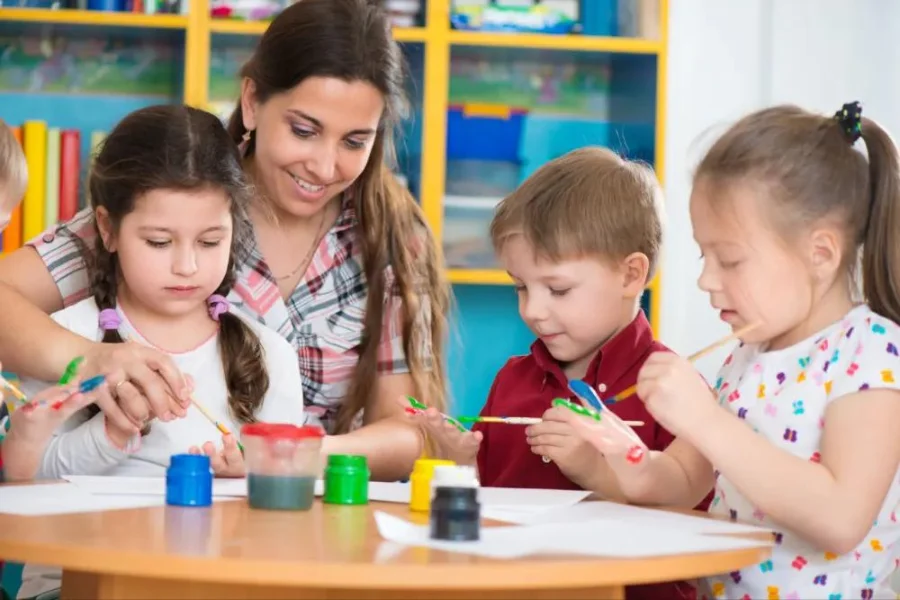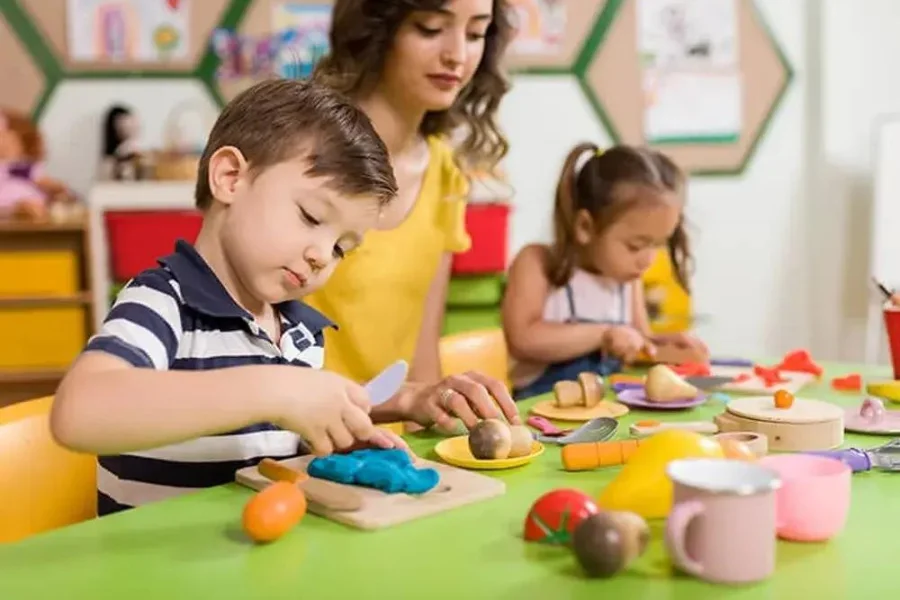Fine Motor Activities for Pre schoolers

Source: millhopper
Fine Motor Activities for Pre schoolers
Fine motor skills refer to the precise movement of hands and fingers, which enables children to hold a pencil or perform small tasks. Early childhood education focuses on Fine Motor Activities for Pre schoolers to develop their small muscle strength and coordination. These activities include beading, cutting papers with harmless knives, buttoning clothes, and a lot more that keep the children focused while developing their hand coordination.
For more details of PPTTC Course Call / Whatsapp on +919869546913 / +919869866277
To Download Brochure of PPTTC Course, Click Here!
Table of Content
What are Fine Motor Activities for Preschool?
Fine motor activities for Preschoolers support and progress coordination and muscle strength. It helps allow muscles movement that children develop control in fingers and hand, which are necessary for writing, picking things, and buttoning clothes.
Rolling and Shaping Dough
Using a rolling pin to create a fun activity helps hand and eye coordination. Playing with clay or kneaded dough increases the movements of muscles, strengthening their core.
Bead Stringing
Putting beads onto a thin string involves precision of hand and eye coordination; this activity is also beneficial in developing patience among children. Inserting thread into a needle is also helpful in maintaining grip.
Tearing and Pasting Paper
Tearing newspapers or colorful paper and pasting them onto a sheet strengthens fingers and improves control. This activity enhances creativity while building essential motor skills.
Using Tongs or Tweezers
Picking up small objects using tweezers strengthens grip and finger control. Sorting beads from one bowl to another is also one of the fun activities that foster patience and control of fingers.
Tracing and Coloring
Performing dot-to-dot activities sharpens focus and hand stability. Tracing letters and shapes with crayons or chalk improves pencil control. Coloring objects within the shape helps to control scribbling and leads to clean movements.
Buttoning and Zipping
This fun Fine Motor Activities for Preschoolers allows children to use finger muscles, enhancing grip and control of hand. It helps children develop independence in daily tasks while enhancing fine motor control.
Pouring and Scooping
Using cups to pour water, rice, or dal between containers improves wrist movement and grip strength. This everyday activity helps refine hand coordination.
These interesting activities in early education make learning fun for young children and also benefit their fine motor development. Aspirants learn the expertise for creating engaging activities and supporting the overall growth of children through the Early Education Courses.

Source: istockphoto
What are Examples of Fine Motor Skills Developed in Childhood?
Fine Motor Skills Developed in Childhood lead to better control of hand muscles and academic success. With continuous practice and the right training through activities, the fine motor muscles develop gradually and completely.
Explore the Examples of Fine Motor Skills development activities applied in early education:
Writing and Drawing
Handwriting – A multisensory skill that requires coordination of the fingers, wrist, and eyes. It becomes essential for school-age children.
Coloring and Drawing – Creativity is a good example and approach to develop finger muscles with colouring activities.
Daily Activities and Small Tasks
Eating- Children use spoons, forks, or knives, which helps develop clasp control and coordination.
Dressing- Tying show lace or buttoning/unbuttoning increases the control over fingers and hands leading to developed motor skills.
Creative and Playful Skills
Braiding Hair – Requires controlled hand movements and finger strength.
Engaging in Crafts – Folding, pasting, and threading beads improve fine motor coordination.
Playing Musical Instruments – Pressing piano keys or strumming guitar strings refines finger movements.
Everyday Functional Skills
Using Technology – Tapping a touchscreen device requires fine motor precision; even typing on a keyboard leads to developed motor skills.
Opening Lunch Boxes and Bottles – Twisting caps, unzipping bags, and opening containers enhance grip strength.
Developed fine motor skills enable children to perform small tasks that require coordination and control with convenience.
How do you Teach Fine Motors?
Developing these skills is a crucial aspect of Early childhood Education. It emphasises enhancing the muscle grip from the early phase of children’s growth. To effectively teach fine motor skills, educators should be creating and executing activities that improve coordination, control, grip, and muscle movements.
Preschool Teacher Training Course from a institute like Vidhyanidhi Education Society (Govt. Regd.) will prepare aspirants with effective teaching techniques to help build these essential skills in children.
Here are Some Effective Ways to Teach Fine Motor Skills:
Encourage the Pincer Grasp
Offer small pieces of food like puffed rice or diced fruit. Picking up tiny objects between the thumb and forefinger strengthens grip and hand control.
Use Toys for Strength Building
Provide toys like drums, hammering sets, or rattles that require tapping and banging. These activities help improve wrist movement and coordination.
Let Them Hold Bottles and Containers
Allow children to hold bottles or containers with their hands; it will require full movement of hands and will increase the strength.
Hand-to-Hand Object Transfer
This improves bilateral coordination and prepares them for tasks like using scissors or tying shoelaces. Guide children to pass objects from one hand to the other.
Introduce Long-Handled Toys
Incorporating the usage of toys with big handles will allow children to apply full muscle grip to hold and improve their coordination.
Pulling activities
This activity involves pulling any ribbon or string of a toy; it strengthens their finger muscles and improves dexterity.
The Preschool Teacher Training Course by Vidhyanidhi Education Society (Govt. Regd.) includes knowledge of engaging activities and supportive teaching strategies that help children develop their fine motor skills effectively. This program helps educators learn structured techniques to nurture these skills in young children.
Shape young minds with our PPTTC Course at Vidhyanidhi Education Society!
For more details of PPTTC Course Call / Whatsapp on +919869546913 / +919869866277
To Download Brochure of PPTTC Course, Click Here!
FAQs
Is Handwriting A Fine Motor Skill?
To improve fine motor skills at a faster rate, handwriting is a crucial activity that helps in enhancing the grip of muscle movement and strengthening the coordination.
What Causes Fine Motor Delay?
Delay in fine motor development happens due to lack of practice, weaker muscles, cognitive dysfunction, and development disorders.




